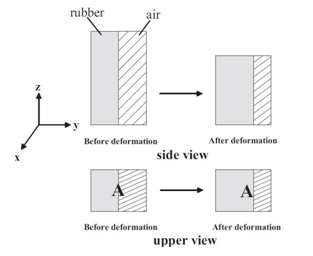Compression Behaviour of Solid Foam
Our Netherlands-based customer (acquired by Canon of Japan in 2010), who is a provider of a full line range of printers, copiers and scanners for daily office practice, both stand-alone and for network applications, was interested in using solid foam (a combination of rubber and air) for the fuse nip rollers in their next generations of printers. Therefore, we were involved in a project dealing with the behaviour of solid foam under compression.
According to the experiments carried out earlier, solid foam can perform better than the pure rubber used in printers nowadays. But those experiments didn’t indicate what has to be changed to create the most suitable material for the company’s purposes. So Abto Software professionals developed a mathematical model to solve this problem.
Experiments’ Results:
- We built three different models of foam compression. All models incorporate air fraction and rubber shear modulus as parameters.
- For each model the stress-strain relation in the material was analyzed and corresponding plots were built. The comparison of the results of all models was made.
- Model 3: The Unit Cell was accepted as the most appropriate. In this model, we consider foam made up of unit cells. A unit cell is considered as a rubber unit and an air unit together, shown in the Picture 1.
- In unit cell there is no need to consider the shape of the air and the rubber. We just think about them as units, no matter if they are cylinders or cubes, or of any other shape. By this assumption the model has a wider range of usage in practice.
Picture 1.
